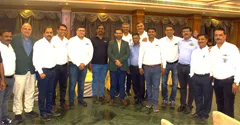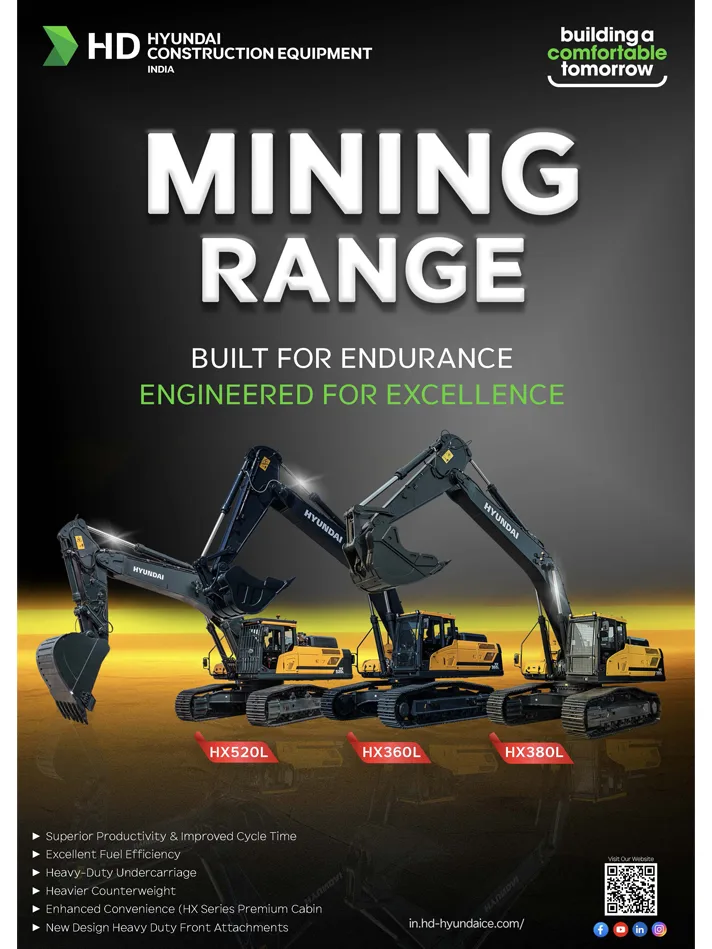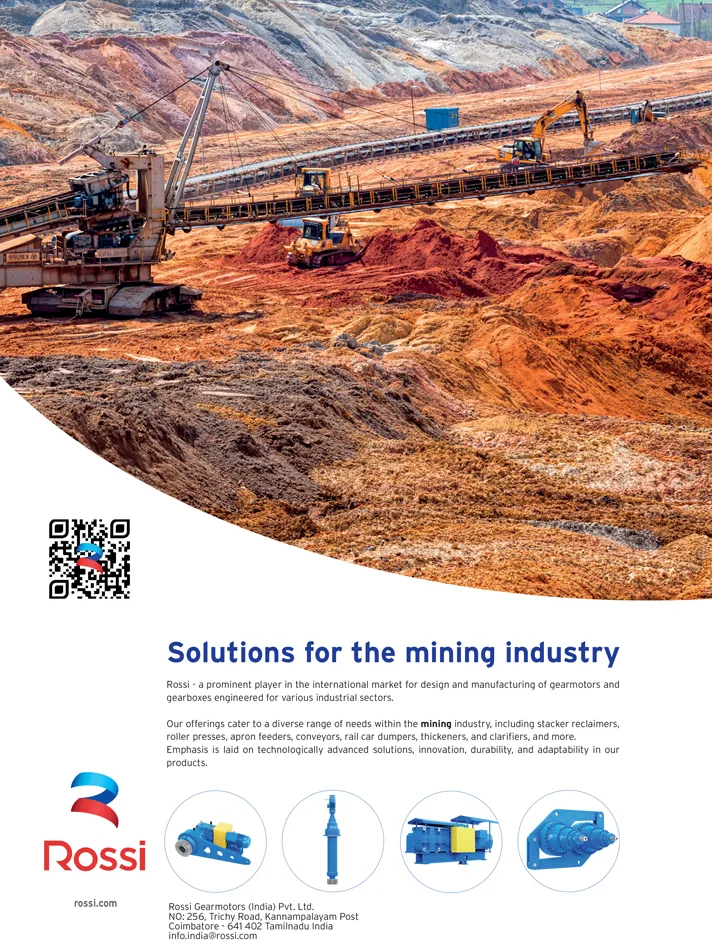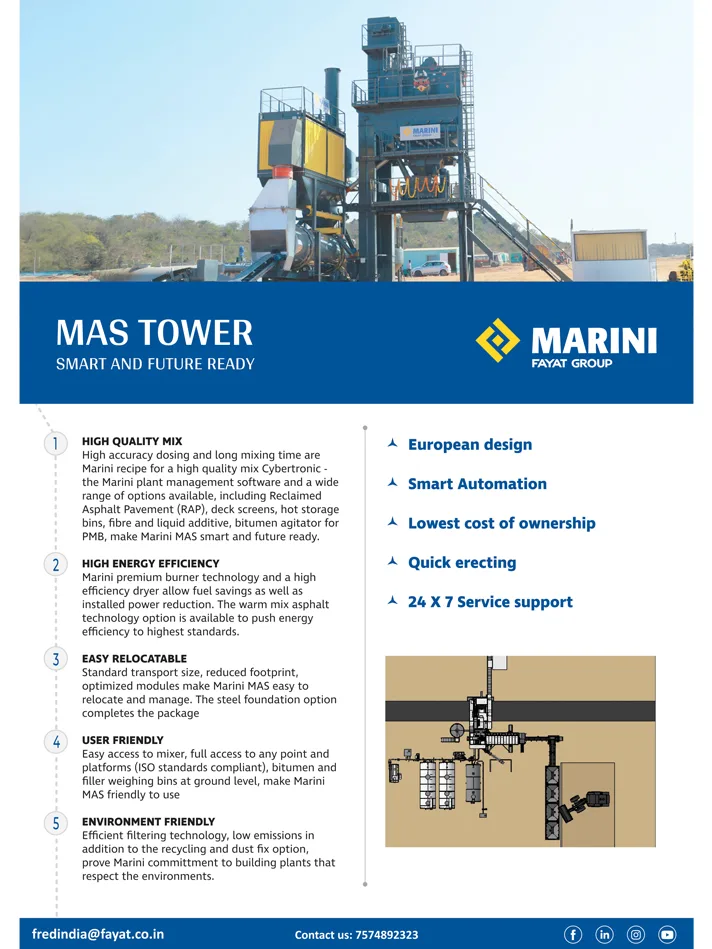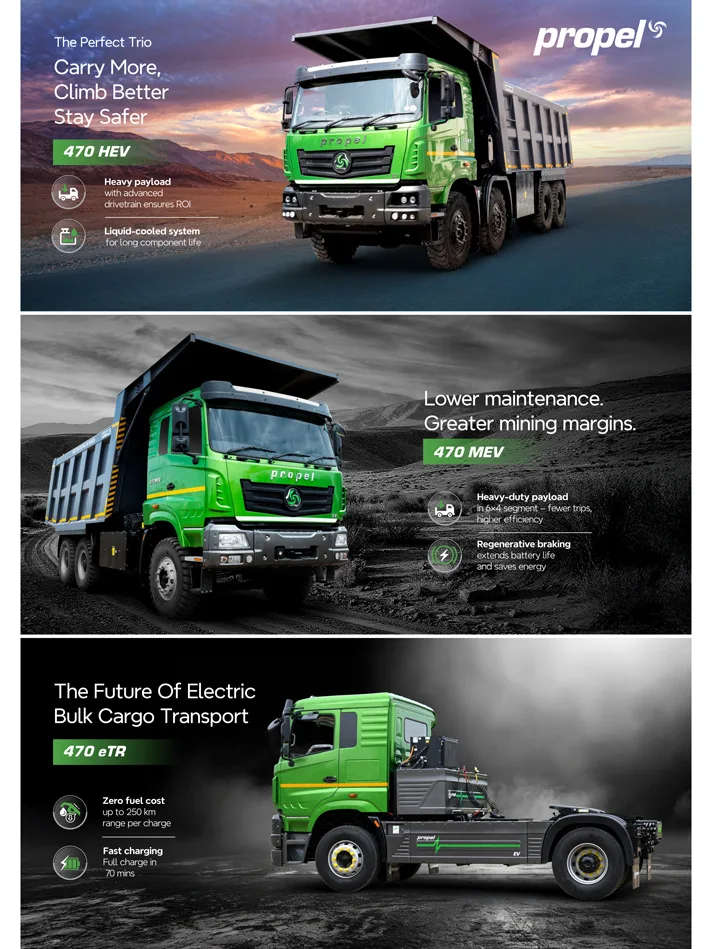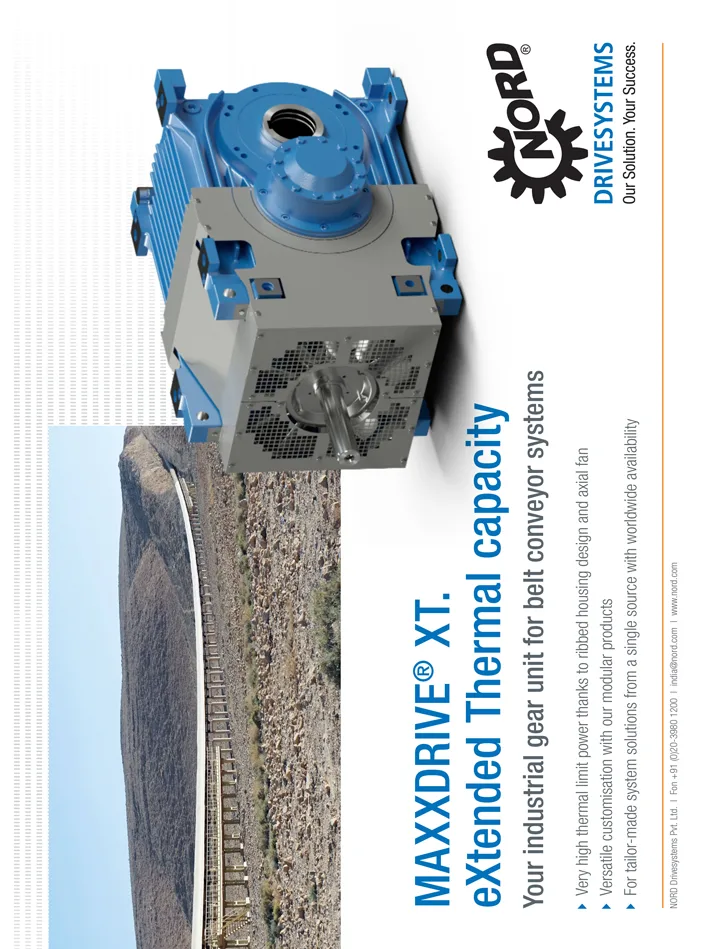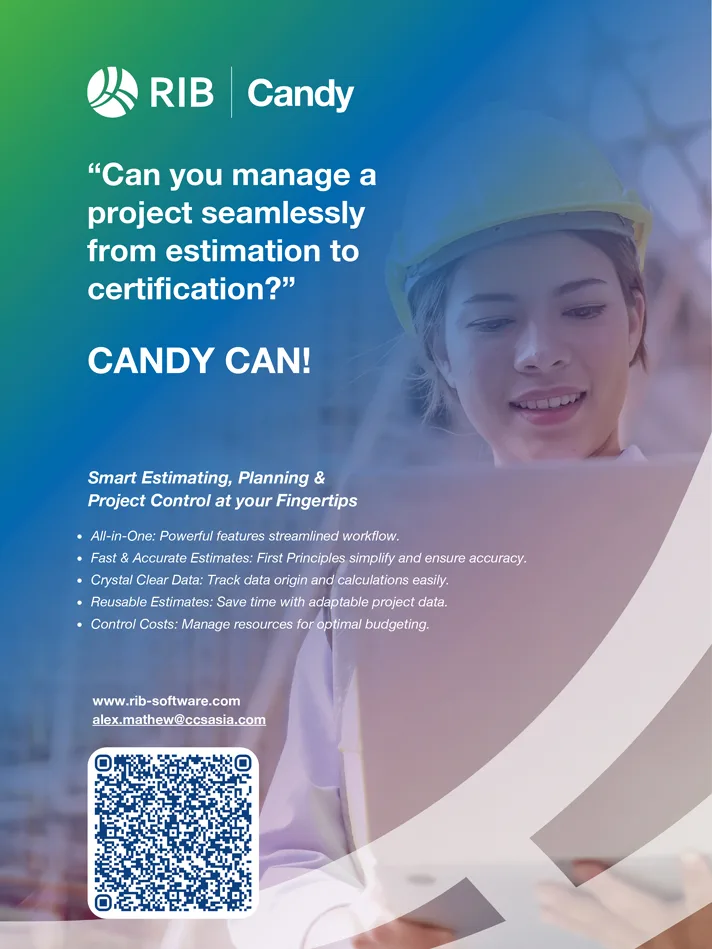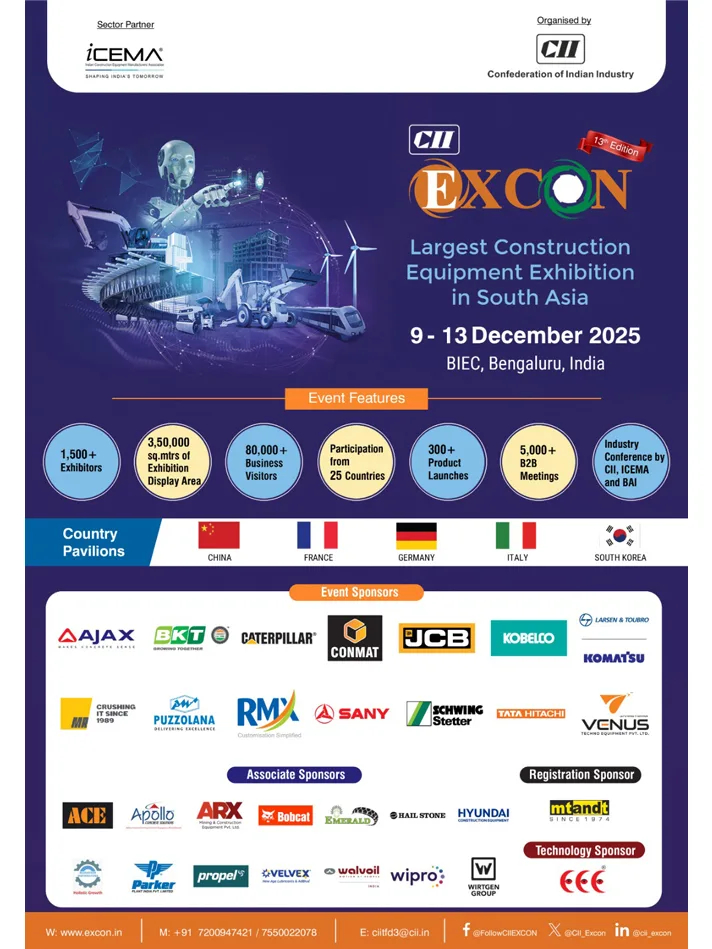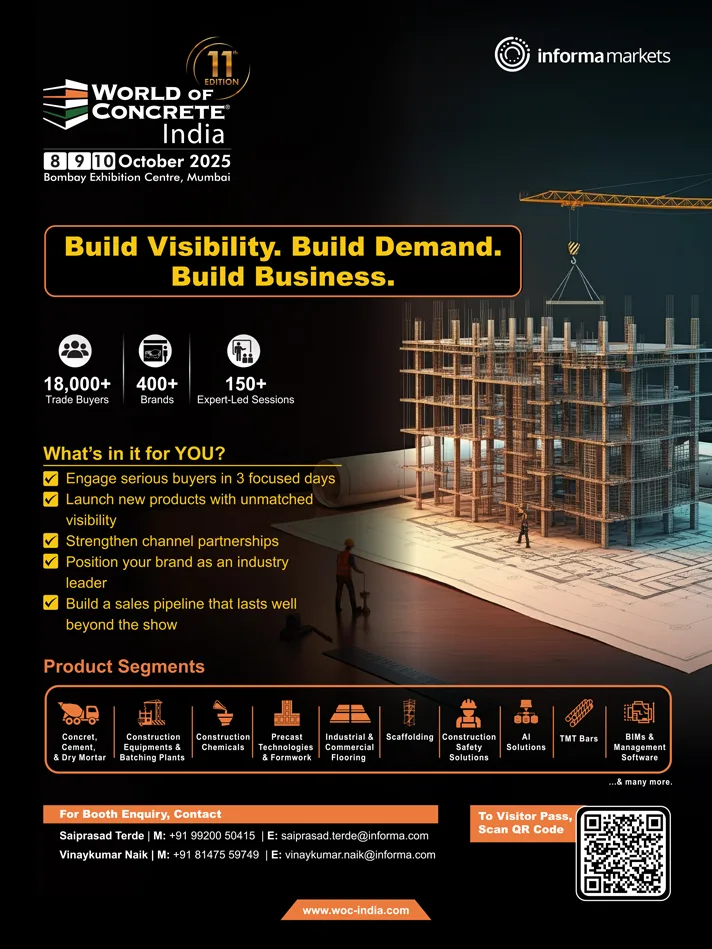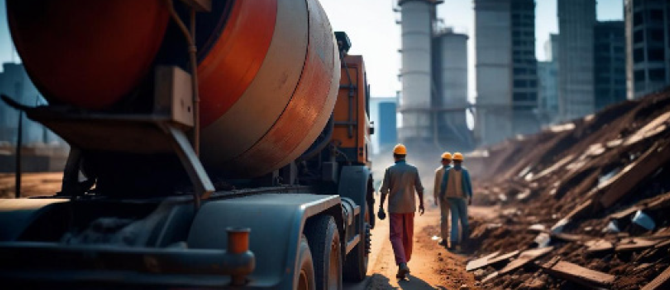
RMC & EQPT
Moving towards Eco-conscious Expanse
Ready-mix concrete (RMC) plays a pivotal role in sustaining and rejuvenating infrastructure by addressing issues such as repairing and renovating buildings, roads, and bridges. Moreover, as the entire world is focused on implementing eco-friendly measures in their operations, sustainability is becoming a prominent trend in the ready-mix concrete market too wherein manufacturers are increasingly incorporating recycled materials such as fly ash, slag, and recycled aggregates into concrete production to reduce carbon emissions and minimize the consumption of natural resources. Trends like these and more are fast shaping up the demand dynamics for ready-mix concrete growth in the country, which is ably backed by the deployment of advanced equipment to ride the growth trajectory… writes, PRERNA SHARMA
Ready-mix Concrete Market Size was valued at US$514.35 million in 2023. The Ready-mix Concrete industry is projected to grow from US$543.41 million in 2024 to US$857.10 million by 2032, exhibiting a CAGR of 5.87% during the forecast period (2024 – 2032), according to Market Research Future research estimates. One of the key reasons driving the market expansion for Ready-Mix Concrete is the development of infrastructure, such as the construction of highways, the renovation of airports, and the building of dams in developing countries, along with the growing trend of urbanization. Based on type, the ready-mix concrete market is segmented into transit mix, central mix, and shrink mix.
According to the Ready-Mix Concrete Market analysis, transit-mix concrete is analyzed to hold a dominant market share of 45% in 2023. Transit-mix concrete, also known as truck-mixed concrete, has emerged as a dominant player in the ready-mix concrete market. This type of concrete is prepared at a central plant and then transported to the construction site in a transit mixer truck. One of the key reasons for its dominance is its widespread usage across various construction applications, including residential, commercial, industrial, and infrastructure projects. Transit-mix concrete offers several advantages that contribute to its popularity. Firstly, it provides consistent and reliable mixing of materials, ensuring uniform quality and strength in the final product. Secondly, the controlled mixing process at central plants allows for precise customization of concrete mixtures to suit specific project requirements, enhancing performance and durability. Additionally, the efficient transportation of transit-mix concrete via mixer trucks enables timely delivery to construction sites, minimizing delays and ensuring project timelines are met. Transit-mix concrete’s versatility makes it suitable for a wide range of construction applications, from simple foundations to complex structures. Its ability to accommodate various additives, admixtures, and special aggregates further enhances its performance characteristics, making it a preferred choice among contractors and developers.
On the other hand, shrink-mixed concrete is expected to grow significantly during the forecast timeframe. It is utilized to retain the advantages of transit-mixed concrete and surge the truck’s load capacity.
Geopolymer cement concrete – An emerging trend
The growing popularity of geopolymer cement concrete is an emerging trend shaping the market growth. Geopolymers are construction materials made from fly ash, granulated slag, and sodium silicate, which are increasingly used in cement owing to superior properties such as resistance to acids, control of high temperature, and ability to impart high strength to buildings. Moreover, geopolymers are used in concrete production to reduce carbon dioxide emissions. In 2023, geopolymers became one of the fastest-growing markets across the world. One of the widely used concretes in the global construction market is geopolymer cement concretes (GPCCs). GPCCs are inorganic polymer composites that have the potential to replace the use of regular concrete.
Further, GPCCs are used for the construction of pavements, buildings, and water tanks. They are also used for other infrastructural development activities. GPCCs are widely accepted over conventional Portland cement concrete owing to their lower carbon footprint, high durability, superior strength, and ecological advantages which will have a positive impact on the ready-mix concrete (RMC) market expansion. Thus, the growing popularity of geopolymers in concrete manufacturing is expected to drive the growth of the market in the future.
Leading Companies Making the Move
Leading companies in the ready-mix concrete market are actively engaged in the development of innovative products and are fast expanding their existing capacities buoyed by the strong market sentiments.

For instance, Shree Cement recently launched Bangur Concrete with the commissioning of its first Greenfield Ready Mix Concrete (RMC) plant in Hyderabad. The company’s combined RMC capacity now stands at 512 cubic meters per hour. Speaking on the occasion, Neeraj Akhoury, Managing Director, Shree Cement Ltd, said, “This venture into Ready Mix Concrete marks our entry into a promising new line of business. We recognize the vast potential of RMC business, which is being driven by India’s growth momentum, the concerted efforts of both Central and State Governments to advance infrastructure projects and an uptick in the housing sector. We’re committed to aggressively expand our presence in this market by building new units as well as acquiring plants.”
He added, “Driven by our core philosophy of ‘Build Smart’, Shree Cement is firmly on track to become a modern and green building material company. In order to maintain our industry leading performance benchmarks, we are ramping up our capacity utilization, enhancing our brand equity, raising cost efficiency and further stepping up our R&D efforts. This strategic approach ensures we continue to set new standards of excellence in the industry.”
Using enhanced technology and automated operations, the special concrete product offerings cater to diverse applications and structures. The product range includes high performance concrete for superior durability, self-compacting concrete for use in heavily reinforced structures, temperature-controlled concrete for large-scale concreting needs and stamped concrete for ornamental pathways and walkways.
Choosing site-mix concrete looks cost effective initially but it is susceptible to multiple problems like poor workability, honey-combing, inconsistent strength, cracks & seepage leading to expensive repairs. UltraTech Durafacad’s unique mix design incorporates the right blend of admixtures that ensures fast execution, superior finish and great durability. It enables you to deliver great build quality to your customers with complete confidence and enduring reputation. UltraTech DuraPlus mix design ensures fast execution, superior finish and great durability increasing service life by up to 30%. Its special mix ensures a smoother, more even concrete pour, reducing those annoying cavities that can weaken your project. It makes concrete easier to work with, saving on labor costs. This means less time and effort are needed to achieve a smooth, even finish. UltraTech DuraPlus’s special formula makes it tougher against cracks. This reduces the need for repairs and saves you time and money in the long run.
Prism RMC has adopted a target to improve its energy efficiency by 4% by 2024-25 from the baseline year of 2022-23. Additionally, Prism RMC has adopted a target to reduce the water intensity of its production process by 4% by 2024-25 against the baseline year of 2022-23. PrismGreen is a responsible concrete which is a testament of our unwavering dedication to shrinking carbon footprint and safeguarding the environment and our future generations. This innovative solution allows us to create a sustainable alternative to conventional concrete without compromising on quality and performance. PrismGreen provides the foundation for buildings that reflect a harmonious blend of modern aesthetics and environmental consciousness.
In India, concrete debris is a major waste stream in the overall construction and demolition (C&D) waste generated.
Godrej Construction has deployed Circular Economy design principles of ‘Recover, Recycle and Rebuild’ for recycling concrete debris to produce prefabricated concrete products such as building blocks, pavers, culverts, ducts and other customized precast concrete products. The company has set up an automated Recycled Concrete Materials (RCM) manufacturing plant at Vikhroli, Mumbai, that runs on 100% Green Power, and has been awarded the ‘Green Co’ Gold Certification by IGBC. It manufactures concrete blocks for walls and pavers using concrete debris recycled from demolished concrete structures from buildings and infrastructure projects, which would otherwise end up in the city landfills. So far, we have recycled over 30,000 metric tonnes of concrete debris.
As part of the prestigious Mumbai Coastal Road project, the company supplied 440 large precast concrete box culverts, each weighing 30 to 35 metric tonnes. These box culverts have been used for the construction of storm water outfall into the Arabian Sea. The box culverts have been manufactured to withstand the harsh conditions of the coastal environment, and also the heavy traffic loading conditions.
To contribute towards sustainable development, the concrete mix design has used up to 10% recycled concrete mix in the manufacturing of these box culverts. This aspect was incorporated into the design of the concrete structures in coordination with the project consultants and authorities. Godrej Construction is one of the first in the RMC industry to switch to 100% green energy. Its 6 out of 7 RMC manufacturing plants have switched to using Green Power for which Maharashtra State Electricity Board (MSEB) has issued a ‘green energy certificate’ to the company.
ACC-Ultivacrete is a high strength concrete manufactured that is used in structures like beams, columns, slabs, and bridges. It has a higher strength than traditional concrete and is more durable and workable. ACC-Ultivacrete is economical for use in high-rise buildings because it allows for a reduction in the size of structural components and the amount of concrete used. It has a specified strength of 50–70 MPa. ACC-Ultivacrete HS is an ultra-high strength concrete with a compressive strength of 65 MPa or higher. It is a flowable mix concrete that doesn’t require vibrators.
Advanced Equipment Gaining Grounds
According to Technavio, the ready-mix concrete batching plant market size is estimated to grow at a CAGR of 3.99% between 2023 and 2028. The market size is forecast to increase by US$109.56 million. The growth of the market depends on several factors such as the increase in demand for ready-mix mobile concrete batching plants, the growth in the number of construction activities, and the preference for ready-mix concrete over traditional concrete.
The construction industry is highly influenced by the developments and the integration of cutting-edge technologies across a number of sectors. This has led to a surge in demand for ready-mix concrete battering plants, which are essential for the successful completion of construction projects. The automated and digitized batching process is one of the most significant technological developments in the concrete batching plant ready mix market.
Moreover, automation systems with sensors, controllers, and software have enabled batching operations to be conducted in an efficient and precise manner. Not only do these systems guarantee accurate measurement of raw materials, but they also improve the overall quality of the concrete mix. Furthermore, automation eliminates human mistakes, boosts productivity, and eliminates material wastage, thus reducing production costs. Hence, such factors will propel the growth of the market during the forecast period.
Concrete batching plants are standard machines for producing the readymix concrete that come in Mobile, compact and horizontal versions and can produce concrete from 18cu.m/hr to 240 cu.m/hr that cater to the requirements of infrastructure developers and also act as an OEM supplier to various cement companies who offer readymix concrete. SCHWING Stetter truck mixers are characterized by low-maintenance technology in a modern design, simple handling, cost minimizing in maintenance and service, efficiency and excellent cost effectiveness.
Putzmeister MT 1.5 Batching Plant is built to handle mass concreting requirements for large infrastructure and building projects, its robust and modular plant design can be suited to meet individual requirements for different applications. The MT 1.5 is packed with features allowing for high volume productivity, ease in operations, and maintenance, and a clean and safe working environment. An efficient and reliable twin-shaft mixer installed in this plant makes it a perfect machine for any mass concreting applications. It can be installed & dismantled faster because of a modular design and has a robust structure that can be easily moved from one location to the next. The automatic greasing system injects grease at regular intervals for the smooth running of the mixer. Highly wear-resistant plates in the mixer are suitable for the production of different types of concrete. It is easily accessible for maintenance and comes with fully computerized software with preventive maintenance schedule and interlocks. Report management system provides extensive production and consumption reports.
Compact yet powerful, CRB 20 Concrete Batching Plant from Ajax ensures seamless production of high-quality concrete. It comes with foldable Mixer unit, panels and swivelable operators’ cabin for single day erection and dismantling, Plug and play feature, One truck required for transportation of entire Plant. Low bin height allows direct loading of bins, elimination of conveyer mechanism saves cost & space on site, Ramp Max height limited to 1m saving cost, cabin design allows it to be pivoted on the machine as well as setup away from the machine, helping to customize the site. Planetary Mixer ensures faster mixing of concrete and faster discharge, it has round mixing arms in NiCr special steel, one rotating star with 3 mixing blades, heavy duty reduction unit in mixer gear box.
Compacted Inclined Belt Batching Plant from Sany is one of the highly efficient and reliable plants available in the market. According to the size of the customer’s site, the inclined belt can be 20°, 28°, or 45°, the silo can be high or low frame, and the batching station can be arranged as “ —” or “L” type, the loading ramp or flat loading is optional. Inclined belt batching plant has high efficiency and stability and low failure rate. It can be used as a commercial batching plant and a project batching plant. It comes with core patented shaft end sealing technology, automatic compensation, reliable sealing, and has easy maintenance with lower cost.
Interrupted spiral arrangement of stirrer, large axial circulation, small radial circulation, central vortex stirring, three-way mixing and boiling type mixing, increases efficiency by 20%. It comes pre-installed with all electrical elements and pipelines, reducing the installation workload on site. The main building is designed according to the standard container size, optimizing the maintenance space while occupying the least packing space.
Sunmix 30 from Sunbeam has FEA-Based Modular Design; super-efficient pan mixer design with octagonal geometry; enhanced Skip Safety System; superior Weighing Conveyor System, etc. Sunbeam 30 CuM. concrete batching plant with pan mixer has two options, in-line and cross-bin type. The plant is designed as modular plant with the benefits of interchanging pan/planetary/twin shaft mixers without any major changes and can perfectly fit. The plant has a separate cement weighing hopper with 3 load cells and water weighing hopper with 3 load cells for accurate cement, water weighing. The plant is run with state of art SCADA software which gives graphical visualization of batching plant. The plant is totally a containerized version and hence any change of location is possible in the shortest time.
AJ180 Concrete Batching Plant from AIMIX has a maximum output of 180 cubic meters per hour, making it suitable for large-scale operations. This stationary concrete plant is equipped with a high-efficiency twin-shaft concrete mixer, ensuring uniform mixing and faster mixing times. Precise aggregate, cement, water, and additive weighing systems ensure accuracy, which helps improve the overall quality of the concrete produced, and the large aggregate storage bins provide continuous supply for uninterrupted operation.
The automatic control system allows operators to monitor and manage the production process in real-time, ensuring quality and consistency, and the system can be operated both manually and automatically, adding flexibility. The plant includes a dust collection system to minimize air pollution.
Shaping Up Trends
The market is growing due to the developing construction sector. Growing incomes in both developed and emerging nations have sped up the building of homes and other structures that will result in significant concrete consumption. As a result of economic expansion, the building sector is going through enormous and unheard-of changes and is gradually moving toward ready-mixed concrete for rapid and simple application. The key contributors to market expansion are China, India, Japan, and other Asian countries. Due to the increasing demand for residential structures, the expanding population in these areas primarily benefits the concrete sector.
Significant efforts are being taken by RMC manufacturers for the reduction of greenhouse gases (GHG) emissions by upping the percentage of additives such as fly ash/slag. This initiative is undertaken to reduce ordinary Portland cement consumption and improve the energy-efficiency of the process. The adoption of the concept of green construction to help with aforementioned effects has led to increased demand for eco-friendly products, as per Fortune Market insights.
Green construction uses the resources of water and energy efficiently, reduces negative impacts, and creates positive impacts on the climate and the natural environment. This has caused producers to develop and invest in green ready-mix concrete. The construction activities of green building involve planning and design with the foremost considerations such as energy and water use, environmental quality, and material selection among many others. The slow depletion in the non-renewable resources and growing expensiveness has caused green construction to become a highly adaptable concept for the construction industry.
According to Industry Arc research, ready-mix concrete market is witnessing a trend towards the adoption of advanced technologies to improve production efficiency, quality control, and sustainability. Automated batching systems, computerized monitoring, and optimization software are being increasingly utilized to enhance the accuracy of concrete mixing, reduce material wastage, and optimize resource utilization. Innovations such as self-healing concrete, which can repair cracks autonomously, and carbon capture technologies integrated into concrete production processes are gaining traction, driven by the industry’s focus on sustainability and environmental responsibility. Additionally, the development of low-carbon concrete formulations and the use of alternative binders are being explored to further reduce the environmental footprint of concrete.
Fast Facts
- The industry witnessed advancements in automation and digitalization within the ready-mix concrete sector. This included the adoption of automated batching plants, AI-powered delivery route optimization, and digital tools for project management.
- There is a growing focus on using sustainable and eco-friendly construction materials. Ready-mix concrete can be made with recycled materials, which is helping to drive its adoption in environmentally conscious construction projects.
- Innovations such as using supplementary cementitious materials like fly ash and slag, incorporating recycled aggregates, and exploring carbon capture and utilization technologies are gaining traction.
- The development of low-carbon or carbon-neutral concrete formulations aims to mitigate the environmental impact of construction activities.


